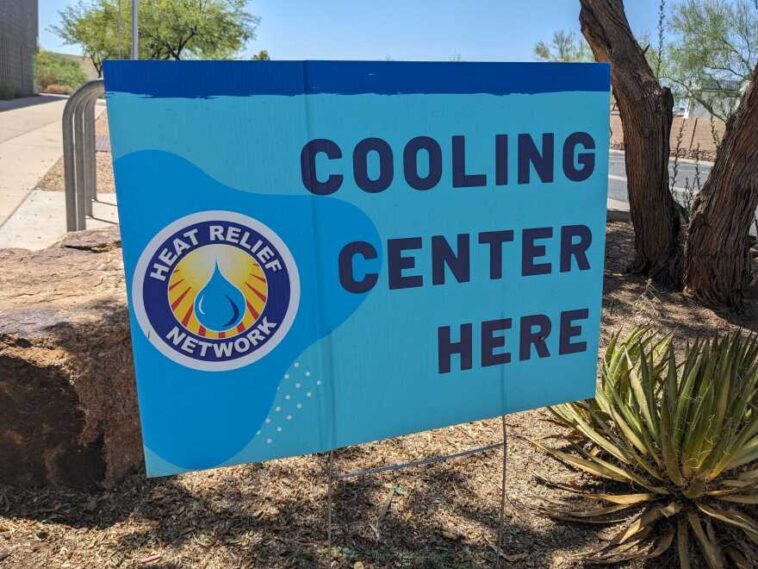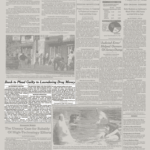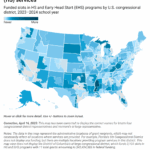
Senator Gallego’s Initiative: A Turning Point for Urban Heat Solutions
The recent introduction of the Excess Urban Heat Mitigation Act by Senator Ruben Gallego of Arizona represents a significant step in addressing an issue that has long been overlooked: the heat island effect in America’s densely populated urban centers. With a proposal to channel $30 million in federal funds through the Department of Housing and Urban Development, this initiative aims to fund a suite of measures—from cool pavements and roofs to increased tree planting—to help reduce the elevated temperatures concentrated in sprawling cities. In this opinion editorial, we take a closer look at the proposal, exploring its potential legal, environmental, and community implications while keeping our analysis balanced and relatable.
Understanding the Urban Heat Island Effect and Its Impacts
Urban heat islands are areas within cities that experience unusually high temperatures compared to their suburban or rural counterparts. This phenomenon arises mainly from the extensive use of dark, heat-absorbing materials, minimal shading, and a lack of green spaces. For many residents, especially those in low-income neighborhoods where tree cover is limited, the consequences can be severe—from increased energy costs and poorer air quality to serious health issues, including heat strokes and related complications.
By proposing a federal grant program aimed at easing these problems, Senator Gallego is addressing not only an environmental concern but a pressing public health issue as well. The legislation is designed to support local governments, metropolitan planning organizations, and even Tribal governments. If enacted, the funding will empower communities to adopt various strategies that could mitigate the extreme temperatures of urban heat islands.
Federal Funding for Urban Resilience and Sustainable Infrastructure
A key aspect of Senator Gallego’s proposal is the potential for federal dollars to bridge the gap between short-term fixes and long-term, sustainable urban planning. This initiative is expected to provide a financial safety net for projects that are often considered off-putting due to their initially intimidating costs and the nerve-racking nature of retrofitting established urban areas.
Some of the projects envisioned under this grant program include:
- Development of cool pavements that reflect more sunlight and absorb less heat.
- Installation of cool roofs designed to lower building temperatures and reduce energy consumption.
- Planting of trees and creation of green zones to offer shade and improve air quality.
- Investments in public infrastructure changes that reduce the overall heat absorption of cities.
These initiatives are not only critical for reducing temperatures but also for fostering a more resilient urban infrastructure. When residents can enjoy cooler weather and cleaner air, the overall quality of life improves, paving the way for cities to become more sustainable and livable in the long run.
Legal Foundations and Policy Considerations: Breaking Down the Tricky Parts
The legal path for funding urban heat mitigation projects, while promising, is also full of tricky parts and tangled issues. One of the primary concerns is the allocation of federal funds to local, and sometimes disparate, governmental entities. Detailed legal frameworks will need to be established to ensure that the money is both adequately managed and targeted to areas with the greatest need.
In analyzing this proposal, it is useful to consider the following key points:
| Legal Consideration | Potential Challenge | Proposed Solution |
|---|---|---|
| Funding Allocation | Unequal distribution across municipalities | Establish clear criteria prioritizing high-risk areas |
| Regulatory Oversight | Ensuring compliance and proper usage | Robust oversight and regular audits |
| Intergovernmental Coordination | Aligning federal initiatives with local policies | Collaborative frameworks between federal and local authorities |
By setting up transparent and accountable mechanisms, policymakers can ensure that the funding is used in ways that truly benefit urban residents. Although the legislative process is often full of complicated pieces and confusing bits, the potential rewards of a cohesive urban heat mitigation strategy make these challenges worth tackling.
Local Government Strategies: Paving the Way to a Cooler City
Many cities, including Phoenix, have already begun to experiment with innovative approaches to combat rising urban temperatures. For example, the City of Phoenix’s plan to develop 100 miles of cool pavement is an early indicator of how cities might benefit from federal support. Local governments will have the unique opportunity to use federal grants to address the specific needs of their constituencies.
Local strategies could focus on several areas:
- Urban Greening Projects: Implementing widespread tree planting and the development of community gardens to improve overall environmental quality.
- Infrastructure Improvements: Upgrading roads, sidewalks, and public spaces with heat-reflective materials which can lower surrounding temperatures.
- Public Awareness Campaigns: Educating residents on the risks of urban heat islands and encouraging community participation in local greening initiatives.
These initiatives are not without their challenges. Making your way through the legal and bureaucratic process to secure federal funding can be a nerve-racking experience for local officials. However, with clear guidelines and effective coordination between governmental layers, these projects can transform urban landscapes, turning seemingly overwhelming issues into opportunities for community improvement.
Environmental Justice and the Distribution of Urban Heat Relief
Another critical aspect of this proposal is its emphasis on environmental justice. Urban heat islands disproportionately affect low-income and marginalized communities. These areas tend to have less tree cover and fewer resources dedicated to public cooling projects, making residents more vulnerable to the adverse effects of soaring temperatures.
Ensuring that federal grants reach these disproportionately affected communities is both a legal and social responsibility. Through targeted funding, cities have the chance to address these inequities head on. The proposals include measures that could significantly improve the living conditions in these regions, alleviating some of the stress caused by extreme temperatures and enhancing overall public health.
Challenges in Implementation: Digging into the Confusing Bits
No policy, regardless of how well-intentioned, is without its challenges. Critics of Senator Gallego’s proposal argue that implementing a federally funded program of this scope involves several complicated pieces and tangled issues. One of the main concerns is ensuring that funds are allocated in a way that is both fair and effective. Given the varied conditions across urban landscapes, a one-size-fits-all approach may not work.
Issues that require close attention include:
- Eligibility Criteria: Determining which cities, counties, or regions are most in need of support and devising a transparent, fair process for grant distribution.
- Monitoring and Reporting: Establishing clear benchmarks and reporting requirements so that awarded funds are used appropriately and yield measurable results.
- Long-Term Sustainability: Integrating these projects into broader urban planning processes to ensure that the benefits extend beyond short-term fixes.
Local governments must be prepared to figure a path through these challenges. While the initial stages of proposal implementation may involve some nerve-racking legal debates and off-putting administrative hurdles, the long-term benefits of a more resilient urban environment provide a compelling counterbalance. The promise of federal support transforms a potentially overwhelming undertaking into a more manageable and essential investment in the future of our cities.
The Role of Federal Grants in Promoting Resilient Urban Communities
Federal grants have historically played a key role in supporting innovative projects that might otherwise be considered too risky or expensive for local governments to tackle independently. In the context of urban heat mitigation, these funds can be the catalyst for change, providing essential resources for projects that directly impact quality of life in urban communities.
Some benefits of a federally funded urban heat program include:
- Boosting Local Economies: Improvements in infrastructure often attract further investment and help stimulate local economic activity.
- Enhancing Public Health: By lowering urban temperatures, cities can reduce the incidence of heat-related illnesses and deaths, particularly among vulnerable populations.
- Encouraging Sustainable Urban Planning: Federal grants can serve as an incentive for cities to integrate green technologies and sustainable practices into their long-term planning.
These benefits underscore the potential of federal intervention in creating environments that are not only more pleasant and livable but also more resilient to the changing climate. Working together through a well-structured grant program, federal and local governments can make headway in addressing urban heat islands—a challenge that has too long been ignored as merely a side effect of urban growth.
Comparisons with Other States and Cities: Learning from Experience
While Arizona’s decision to pursue a dedicated federal grant program marks a pioneering approach, cities across the United States have been coping with urban heat issues for decades. From the concrete jungles of New York to the sprawling centers of Los Angeles, numerous municipalities have embarked on their own journeys to counteract the urban heat island effect. Comparing these initiatives can offer valuable insights into which strategies work best and what pitfalls to avoid.
Let’s take a look at some key comparisons:
| City | Initiative | Results |
|---|---|---|
| New York City | Extensive tree-planting programs and green roof installations | Noticeable reduction in local temperatures, improved air quality |
| Los Angeles | Investment in cool roofs and reflective pavements | Lowered surface temperatures and reduced energy consumption |
| Chicago | Urban renewal projects with integrated green spaces | Enhanced public health indicators and community satisfaction |
These examples illustrate that while the fine points of implementation vary, the small distinctions in approach can have a major impact on outcomes. By taking a closer look at these experiences, Arizona’s policymakers can steer through the challenges inherent in setting up a federal grant program and build on proven methods to ensure sustainable change.
Expanding the Program: A Call for Comprehensive Urban Solutions
The $30 million grant program proposed by Senator Gallego must be seen not as an isolated remedy but as part of a broader strategy to address urban environmental issues. In this opinion, the proposal should be praised for its intent to support sustainable urban planning; yet, it is also critical to acknowledge that such measures need to be integrated into a larger framework of federal, state, and local policies.
Key areas for expansion include:
- Integration with Transportation Policy: Improved public transit and pedestrian-friendly pathways reduce reliance on heat-emitting vehicles.
- Housing and Urban Development (HUD) Collaboration: Aligning cooling initiatives with affordable housing projects to ensure that vulnerable communities reap the benefits.
- Long-Term Climate Adaptation Strategies: Integrating heat mitigation projects with broader resilience planning to address other extreme weather events.
The proposal could also benefit from establishing a systematic review process to continually assess progress and refine strategies as urban demographics and climate patterns evolve. While finding a path through the bureaucratic and legal twists and turns can be a nerve-racking task, it is a must-have step to ensure that the program remains dynamic and responsive to emerging challenges.
Legal and Policy Implications: Sorting Out the Hidden Complexities
It is worth acknowledging that any policy initiative of this magnitude comes loaded with potential legal challenges. From ensuring compliance with environmental regulations to setting up a comprehensive framework for fund management, lawmakers will have to puzzle through several hidden complexities. Yet, by engaging experts in environmental law, urban planning, and public policy, these issues can be addressed with transparency and accountability.
Some of the legal hurdles include:
- Interagency Coordination: The need for clear communication between federal and local entities to prevent overlap and ensure accountability.
- Dispute Resolution Mechanisms: Establishing fair processes to resolve conflicts related to fund allocation and project implementations.
- Data Collection and Reporting: Instituting standardized guidelines to measure success and monitor progress effectively.
By building a robust legal framework from the start, the proposal can avoid many of the nerve-racking pitfalls that typically hinder large-scale federal initiatives. This is a crucial step in making sure that urban heat mitigation efforts are sustainable over time and that they deliver on their promise to create healthier and more sustainable communities.
Public Engagement and Community Participation
An equally important aspect of implementing the Excess Urban Heat Mitigation Act is the need for strong public engagement. When community members are informed and involved in the planning and execution of local projects, the initiatives often have a greater chance of success. In many cities, local leaders have already begun holding public forums and workshops to discuss the impact of urban heat islands and to gather suggestions for improvement.
Some effective community engagement strategies include:
- Town Hall Meetings: Regular sessions where residents can voice their concerns and offer ideas for local cooling measures.
- Community Workshops: Educational programs that teach citizens about sustainable practices like residential green roofing or urban gardening.
- Collaborative platforms that allow local governments to receive real-time feedback on projects currently underway.
Engaging the public in this way not only improves project design but also increases accountability. It can transform what might seem like intimidating federal intervention into a community-led mission that resonates with the everyday experiences of urban residents.
Final Thoughts: Charting a Balanced Path Forward
Senator Gallego’s proposal to introduce a $30 million federal grant program for urban heat mitigation is a promising development in the fight against the escalating challenges posed by urban heat islands. By focusing on initiatives such as cool pavements, reflective roofs, and extensive urban greening, the proposal offers tangible solutions that directly address public health, economic vitality, and environmental justice.
While the path forward is not without its tricky parts and confusing bits—given the loaded legal and administrative challenges involved—the potential long-term benefits are far too significant to ignore. The proposal encourages local governments to figure a path through the maze of bureaucratic and infrastructural challenges, transforming overwhelming urban problems into innovative and sustainable solutions.
In our opinion, this initiative represents more than just a set of isolated projects; it is a key piece of a larger puzzle that aims to reshape urban living in the face of climate change. By securing federal funding and establishing rigorous accountability measures, policymakers can help ensure that urban environments evolve to meet the needs of all residents—especially those in under-resourced communities that have long borne the brunt of extreme heat.
Ultimately, while critics point out the tangled issues of fund allocation and regulatory oversight, the projected benefits of improved public health, increased economic opportunities, and strengthened environmental resilience present a persuasive argument in favor of the legislation. As cities across the nation continue to confront the nerve-racking realities of rising temperatures and diminished green spaces, the Excess Urban Heat Mitigation Act may well serve as a blueprint for future federal initiatives aimed at creating safer, cooler, and more sustainable urban centers.
In conclusion, as we take a closer look at the myriad potential benefits of this proposal, it is clear that a comprehensive approach—one that integrates federal support with local innovation—will be essential in turning the tide against urban heat islands. By fostering community involvement, setting up robust legal frameworks, and learning from successful initiatives across the country, we can work through the challenges and create urban environments that are resilient, sustainable, and just.
A Comprehensive Checklist for Implementing Urban Heat Mitigation Programs
For policymakers and local governments seeking to get into the details of this transformative initiative, consider the following checklist as a roadmap to success:
- Define Eligibility: Set clear, transparent criteria for which communities are most in need.
- Secure Funding: Establish protocols for fund distribution and verification, ensuring fair and effective allocation.
- Engage the Community: Organize public forums and workshops to garner community input and support.
- Partner with Experts: Collaborate with environmental scientists, urban planners, and legal experts to ensure projects are both innovative and compliant.
- Monitor and Evaluate: Develop measurable benchmarks for project success and implement regular reporting schedules.
- Plan for Sustainability: Integrate projects into broader urban and climate change adaptation strategies to ensure their long-lasting impact.
This checklist underscores the importance of a holistic approach, balancing legal groundwork with practical, community-focused initiatives.
Looking Ahead: The Promise of a Cooler, More Equitable Future
As urban centers continue to expand, the challenges posed by the heat island effect will only become more pronounced. However, initiatives like the Excess Urban Heat Mitigation Act offer a promising path forward. By addressing the issue at both a federal and local level, and by embracing community engagement and sustainable practices, cities can be transformed into spaces where environmental justice and urban resilience go hand in hand.
In our view, the proposal is more than a response to rising temperatures—it is an opportunity to innovate, to rebuild urban landscapes, and to ensure that all communities, regardless of income or location, have access to a healthy environment. While the implementation process may require navigating a series of legal twists and turns, the long-term goal of reducing urban heat and enhancing public health is a cause that deserves full support and careful attention.
Ultimately, by taking a balanced approach that integrates federal aid with local expertise and community involvement, we can look forward to a future where cities are not only cooler but also more sustainable, resilient, and just for everyone.
About the Author
This article is written by a seasoned legal analyst with a background in urban policy and environmental law. The analysis presented here reflects a commitment to unbiased reporting and thoughtful commentary on the evolving intersections of law, public policy, and city planning.
Originally Post From https://hoodline.com/2025/03/senator-gallego-introduces-30-million-federal-grant-program-to-combat-rising-urban-heat-in-arizona/
Read more about this topic at
Reduce Heat Islands | US EPA
Urban Heat Island Effect Solutions and Funding


